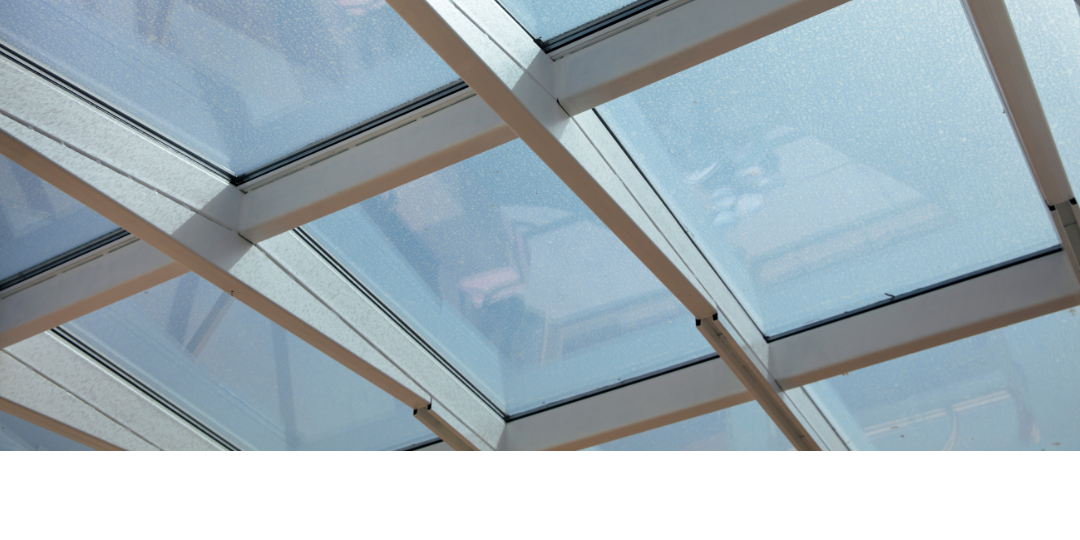Skylights are a fantastic addition to any home or commercial building, providing natural light, energy efficiency, and an open, airy atmosphere. Whether you’re considering skylights for your new construction project or thinking about retrofitting your existing structure, understanding the various types of skylights available is crucial. In this blog post, we’ll explore the wide range of skylights and discuss the different types you can choose from, each with its unique characteristics and benefits.
Fixed Skylights
Fixed skylights, also known as stationary or non-venting skylights, are the simplest and most popular type. They are designed to bring natural lighting into space but cannot be opened. Fixed skylights are ideal for areas where ventilation is not required, such as hallways, stairwells, and areas with limited accessibility. These skylights are known for their energy efficiency, as they minimize heat loss and gain due to their sealed construction.
Pros of Fixed Skylights:
- Excellent for providing natural light in indoor spaces.
- Minimal maintenance required.
- Energy-efficient due to their non-venting design.
Cons of Fixed Skylights:
- Lack of ventilation.
- Cannot be used for emergency egress.
Venting Skylights
Venting skylights, as the name suggests, are designed to provide not only natural light but also ventilation. These skylights can be manually or electronically operated, allowing you to control the amount of fresh air that enters your space. Venting skylights are a great option for kitchens, bathrooms, and other areas where proper ventilation is essential.
Pros of Venting Skylights:
- Provide natural light and ventilation.
- Can be opened and closed as needed.
- Enhance indoor air quality.
Cons of Venting Skylights:
- Require regular maintenance to ensure proper operation.
- More prone to leaks compared to fixed skylights.
Tubular Skylights
Tubular skylights, also known as sun tunnels or light tubes, are a unique and innovative way to bring plenty of light into interior spaces where traditional skylights are not practical. They consist of a small dome on the roof that captures sunlight and redirects it through a highly reflective tube to a diffuser on the ceiling. Tubular skylights are particularly popular in areas like closets, bathrooms, or small, dark rooms.
Pros of Tubular Skylights:
- Ideal for spaces with limited roof or ceiling space.
- Energy-efficient and cost-effective.
- Reduce the need for artificial lighting during the day.
Cons of Tubular Skylights:
- Limited in the amount of light they can provide.
- May not be suitable for large or open areas.
Pyramid Skylights
Pyramid skylights are a visually appealing choice for bringing in natural light while adding a unique architectural element to your space. These skylights are characterized by their pyramid-shaped design, which can be installed flat or with a slope. Pyramid skylights can be both fixed and vented, depending on your requirements.
Pros of Pyramid Skylights:
- Unique and eye-catching design.
- Available in a range of sizes and shapes.
- Offer natural light and ventilation options.
Cons of Pyramid Skylights:
- Generally more expensive than standard skylights.
- May require additional maintenance due to their complex design.
Ridge Skylights
Ridge skylights are another stunning architectural choice that can make a bold statement in any building. They are installed along the ridge line of a roof, creating a long, continuous source of natural light. Ridge skylights are often used in industrial and commercial spaces to illuminate large spaces, such as warehouses and factories.
Pros of Ridge Skylights:
- Provide abundant natural light.
- Create a dramatic visual effect.
- Suitable for large, open areas.
Cons of Ridge Skylights:
- Complex installation process.
- A more expensive option.
- May require regular maintenance to prevent leaks.
Sloped Glazing Skylights
Sloped glazing skylights are installed at an angle, providing a sleek and modern look while allowing for drainage of rainwater and melting snow. They can be fixed or venting, and their design can range from simple and minimalist to more intricate and decorative. Sloped glazing skylights are commonly used in commercial buildings, such as shopping malls, hotels, and offices.
Pros of Sloped Glazing Skylights:
- Sleek and contemporary appearance.
- Excellent drainage and weather resistance.
- Ideal for commercial and large residential spaces.
Cons of Sloped Glazing Skylights:
- Initial cost may be higher than other skylight types.
- Installation complexity can vary based on the design.
Custom Skylights
Sometimes, none of the standard skylight types quite fit your vision. In such cases, custom skylights may be the answer. Custom skylights are tailored to your specific needs and can come in different shapes, sizes, and designs. They offer flexibility in terms of aesthetics, allowing you to achieve a truly unique look.
Pros of Custom Skylights:
- Tailored to your exact specifications.
- Perfect for specific architectural features.
- Allow for creative and unique solutions.
Cons of Custom Skylights:
- Typically, higher upfront costs.
- May require longer lead times for design and fabrication.
Conclusion
There are many different designs and styles of skylights, each offering distinct advantages and suited to different applications. Whether you need some extra light from outside, to improve energy efficiency, or enhance the aesthetics of your home or commercial building, there’s a skylight type that’s perfect for your needs. When considering skylights for your project, it’s essential to take into account factors such as location, budget, maintenance, and design preferences.
At Pinnacle Roofing Associates, we understand the importance of choosing the right skylight for your building. Our team of experts can help you explore the various options, assess your requirements, and provide professional installation services to ensure your skylights meet your expectations. Make the most of the natural light and beauty of the outdoors by selecting the perfect type of skylight for your space.

